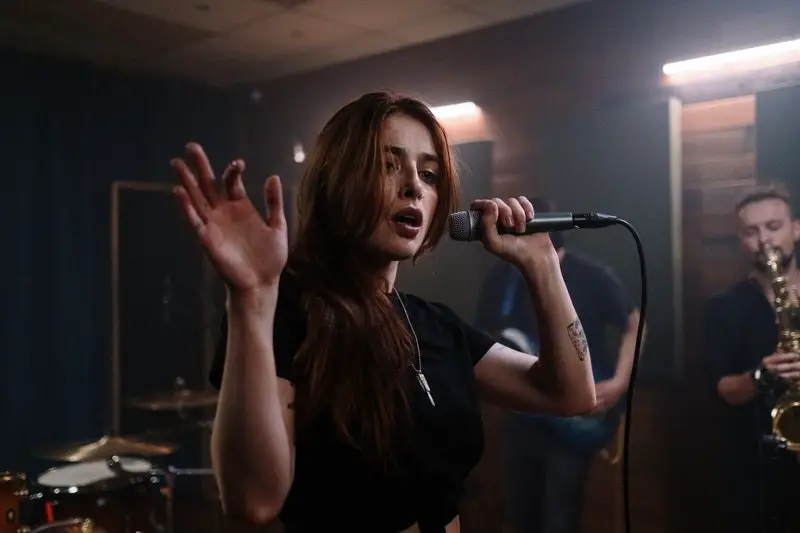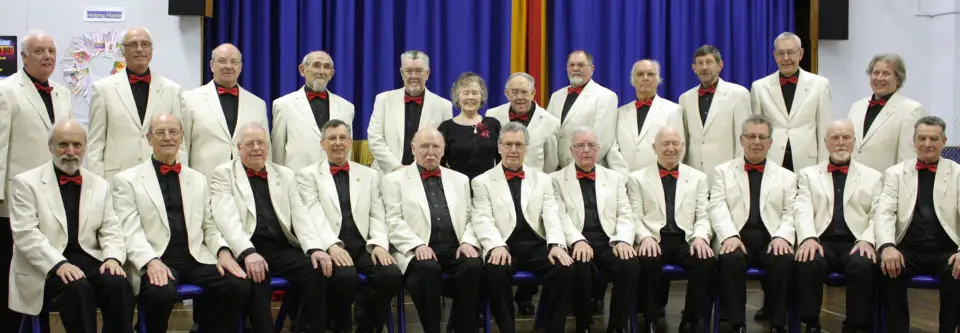What is a Hook in a Song ? : 7 Different Types Explained.
 Image courtesy of Naitian Tony Wang
Image courtesy of Naitian Tony Wang
A hook is any part of the song's words or music which is designed to catch the listener's attention. It can be a single note or whole chorus or a rhythm which underpins the whole song. A hook should be a bit unusual or outstanding or clever or funny. It should be sonically challenging but at the same time irresistible. It should invite listeners to repeat it over and over in their minds, in this way it becomes what's known as an ear worm and the listener becomes 'HOOKED.'
Hooks can be divided into categories and it's wise to use different types at different points in your song. Here we look at the six types of hook which you're most likely to use and provide examples of when, where, how and why you'd use them.
As I've said, hooks are simply chunks of song which have two purposes: catching your listeners' attention and re-enforcing your message. No surprise then that they're usually repeated and you'll struggle to find songs which don't have at least one hook somewhere. Even if it's only in the drum beat, it's still a hook. So there's no need to get hung up about hooks - you're probably writing them without realising it. But it's important to recognise them so that you can weave them into you music.
Types of hook in this article.
-
1. The Rhythmical Hook
-
2. The Melodic Hook
-
3. The Lyrical Hook
-
4. The Textural Hook
-
5. The Harmonic Hook
-
6. The Sonic Hook
-
7. The Rhyming Hook
1. The Rhythmical Hook.
 Image courtesy of Nate Greno
Image courtesy of Nate Greno
When
This is the most simple and most common hook. Solo percussion can be super hooky so don't underestimate drums - after all, they are the oldest instrument. Also, a drummed rhythm will almost always be the first hook your audience hears. It will grab them in the first two bars and should hold up the song all the way through to the end. That's why it's the most important hook in your song.
Where
All the way through, it's value may be overshadowed as other elements come into play. So focus on the first few bars and really make it stand out. Repeat a solo version for a bar or two before each verse to remind your listener of the beginning and allow them to associate with it again.
How
You're unlikely to come up with a unique rhythm, they've all been done before in some culture somewhere. But you don't need to. Basic stuff done well and in time is all your listener needs. If you want to put your mark on it, have bass instruments keep the beat. Use a different instrument for each beat, it's all about experimenting to see what works. If it's not hooky, stick to drums.
Why
Because a song needs repetition, punch and clout, and the punchier and cloutier it is, the better it will grab your audience's attention. Even sad songs about heartbreaking issues need impact. For these types of song, instead of the rhythmical hook being in the drums, you can move it to a less aggressive instrument like guitar or piano.
A notable rhythm helps give your song something called 'texture,' without it, a song is wishy washy and vague. I'll talk more about texture later.
2. The Melodic Hook.
When
This is your second most important hook and it may come in two flavours. One for the verse, and one for the chorus or refrain. Although, it should weave an emotional narrative throughout the song.
Where
The first lines of verses and choruses are important but the most hooky melodies are usually in choruses and refrain. They are especially hooky as the last line of a chorus, some line you might want to repeat for example.
How
A lot depends on how the syllables fall into the rhythm but you should try to stick to one golden rule. That is, move to the closest available note.
I know this sounds like pompous rubbish but it is so important. A melody needs to flow nicely and smoothly in a certain direction. It should either go up for while or down for a while, it can dance around a couple of notes in the same place. But it should not jump too far.
It should only jump around when you need impact to emphasize something. And then it's should stay at this new level and not jump around all over the place because that is really difficult to listen to.
Try to think in waves of emotion which match the phrases you're singing. Like waves crashing on beach, there's never two the same, and some are big and noisy whilst others are weak and vulnerable.
Why
We use melodic hooks because all language, everywhere in the world, has a natural melody when spoken. Listen to Welsh or Chinese for good examples of this.
The rise and fall of the pitch comprises at least 50% of the message in the words and nearly always has more emotional clout than what is actually said. How many times have you heard, 'I could tell he was lying by the way he said it ?'
So a clue to how the melody could be written might be found in how you would speak a phrase when you really mean it. That will make it a great hook because it's what listeners expect to hear.
3. The Lyrical Hook.
 Image courtesy of CottonBro
Image courtesy of CottonBro
When
You can't have lyrical genius throughout your song because it would be too much and there'd be no distinction between good bits and really powerful great bits.
Where
Lyrical hooks usually work best at the beginning or ends of verse, but a whole chorus can be great hook, it depends if it's nice to listen too and song.
How
A song should be nice to sing. If it's nice to sing, people will sing it to themselves after they've finished listening to it. There is no greater hook than that.
Repetition is a real easy lyrical hook, say something enough times and must true, right ? Well, kind of. You can say what ever you want in a song and usually get away with it. In repetition, it invites the audience to consider that what you say might be true, such as, 'the sky is not blue.'
Rhyme is probably the most overused lyrical hook. But this is because it works and it works really well. Most popular songs in western culture have rhyme all over the place, it's expected and songs are subconsciously judged on the quality of their rhyme. The trick is that the rhyme should serve the song and not the song serve the rhyme.
Why
We use lyrical hooks because language has a natural beauty and elegance to it. This is why we get cliched and overused phrases, because people like saying them and people like hearing them. They're part of all our lives and we hear them everywhere. 'Rain tapping on the window pain,' 'hot sun, beating down.' Repeat these in the right way, and at the right point in your song and you have a great simple hook.
They also become accepted statements of wisdom, the kind which belong in a song, such as 'you don't know what you've got til it's gone.' This gives a song gravity and elevates it above being a pile of teenage fluff. It gives listeners a take away message worth taking away.
4. The Textural Hook.
When
We use textural hooks when ever we can fit them it. They're most often associated with dance music but they feature in all music of every kind. The way a strummed guitar sits nicely in between the singers words makes it a textural hook because it fits just right.
Where
Texture spans right across the song, if you have more than one instrument or one voice, you've got texture. It's overlooked but really important.
How
Good texture is much harder to produce than it sounds. In some instances notes and rhythms and pulses imitate each other, sometimes they go in opposite directions, but always they interact and compliment each other. They work as a team and don't clutter up and get in each other's way
For example, instead of a simple beat using a bass and snare drum, you might use four, eight or sixteen different instruments to keep time. Each just playing one beat at exactly the right time.
Another example would be a horn section barking out a chord between each word the singer sings.
Yet another example is how the sharp attack of a picked acoustic guitar contrasts against a long slow flute.
Why
We use textural hooks because they are super addictive and super absorbing. They have a similar hypnotic quality to harmony, yet are completely different. Classical orchestras are revered because they combine both texture and harmony very well.
But all music is a kind of textural hook, if it resonates with how were feeling, we just want to stay in it forever. If you've ever experience a live full orchestra, trance dance or meditation, you're getting it.
5. The Harmonic Hook.
 Churnet Valley Male Voice Choir
Churnet Valley Male Voice Choir
When
If you're using instruments, then Harmony happens throughout the whole of the song. Basically, the more stuff you use, the bigger and more interesting and hooky it should sound.
Where
You should use varying amounts of harmony to give your song textural variety. Alternate between passages being harmonically rich and simple. This is why harmony is usually bigger and more emphasized in choruses and at the end of songs.
How
Hold on to your hats cos it's about to get complicated.
Harmony is the word used to describe where notes sit on the sound spectrum when compared to other notes which are sounding at a similar time. You see, all notes have a sonic relationship with each other and some of them simply don't get on. At least, once they hit our eardrum, our brains think they don't get on.
To make good hooky harmonies you need a mix of notes which get on well with each other or you'll just get what's known in the trade as 'a noise.' OR, you may get something else called 'mud.' To avoid noise and mud you need to choose a broad mix of notes, especially in the bass end of the spectrum.
Now, here's a stumbling block. You'll struggle to write good harmony without knowing some music theory. You can get by and you can have some happy accidents but harmony is pretty complicated.
In a song, harmony is going to mostly involve a bass, some rhythm instruments and the singer. But it even this simple arrangement can lead to a right old noisy mess between the singer and other instruments.
The simple rule is to keep the other instruments in a different octave than the singer. That's how you get a good, rich, nice, hooky sound.
Why
We use harmonic hooks because they are very addictive and soothing. The mixture of frequencies does something magical to our brains and makes us want to remain in that sound forever. Good harmony is the pinnacle of good composition and is highly prized and well respected all over the world.
6. The Sonic Hook.
When
A very distinctive sonic hook either needs to go at the beginning or in the instrumental section near the end or after the choruses. If you use it too much it will be - too much.
Where
Some well known combinations can be used throughout the whole piece. Synths can also provide pretty stable sonic hooks.
How
Synthesizers, effects pedals and samples provide the most obvious how to's. But any combination will make a great sonic hook. For example, ukulele and acoustic guitar can just sound 'so right' you can't ignore it. Out of tune honky tonk piano works brilliantly in the right context. And Jews harp tells you it's gonna be country, if you like country, it's a hook.
Any instrument used in the wrong context can also make an interesting hook. There's been a bit of debate recently in England about whether a trumpet should be used in a traditional folk group. It sounds great but it's not a traditional instrument so attracts and offends. It's a hook.
And of course, you can use any combination of sound effects from the school music room cupboard. Cowbell, whistle, triangle, thunderbox, etc.
Lastly, the most hooky instrument of all, the human voice. A voice can be hauntingly beautiful, achingly dull or dripping with desire. I can melt you or freeze you or totally unease you. Your voice is the best hook you have. Learn to use it properly, look after it and don't abuse it.
Why
We use sonic hooks when we're reaching for something particular or unusual. A violin is just a violin till you pluck it, and a multi-layered synth pad will hook audiences because they won't have heard it before.
We use them to prepare listeners for something, to steer them in a particular direction. While they're good for putting music into a particular niche, they also limit reception.
And remember, the more unusual your sonic hook, the quicker it's likely to go out of fashion. That is, unless you've just invented a new genre !
7. The Rhyming Hook.
When
As I've said, Rhymes are probably the most overused hook but they do a job and they do it very well. They can appear absolutely anywhere and everywhere in a song.
When you use rhyme will depend on your audience and the type of song your writing. If you're aiming at younger listeners with dance music, then you can't use enough rhyme. If your song is more serious and for older folks, then you need to be more subtle by using half rhymes or nearly rhymes or none at all.
The reason is that excessive rhyme tends to serve itself rather than the song. So you end up with a bunch of rhymes which displace the emotional meat.
Where
Usually at the end of a phrase but to can be used absolutely anywhere is ok. Look up 'alliteration,' this is where you rhyme the first syllable of successive words. It's a powerful fallback and not so in your face.
How
Rhyming dictionaries can be useful but given time you'll develop the habit of going through the alphabet quickly in your mind. It sometimes helps to start at the end of your phrase and work backwards.
A rhyming dictionary won't help with nearly rhymes. This is where a word barely rhymes at all but the similarity in the vowels and consonants makes a pattern which is hooky. an example might be, 'dancing with trees - drowning my tears.' It's very subtle, but it's close enough to be hooky and it more emotive because of it's not in your face.
Why
Almost all music and song is built around patterns and our minds love hearing them. Rhyme is a very literary pattern which we just can't get enough of.
Used properly it can be your most important hook, but it can also ruin a song if it's overused and poorly constructed.
Conclusion.
 Image courtesy of Andrea Piacquadio
Image courtesy of Andrea Piacquadio
I hope you now have a clearer grasp of what a hook is and what you should be striving towards when using them.
Hooks give your songs punch, persuasion and power. They hold peoples attention and ensure more of your message has time and energy to move your listeners emotionally.
The trick is to know what they are, and how and where they should be used. If you try to write hooks, then you're doing it all wrong, instead write the song and let the hooks just come along.
They will, because now you know how to recognise them.
